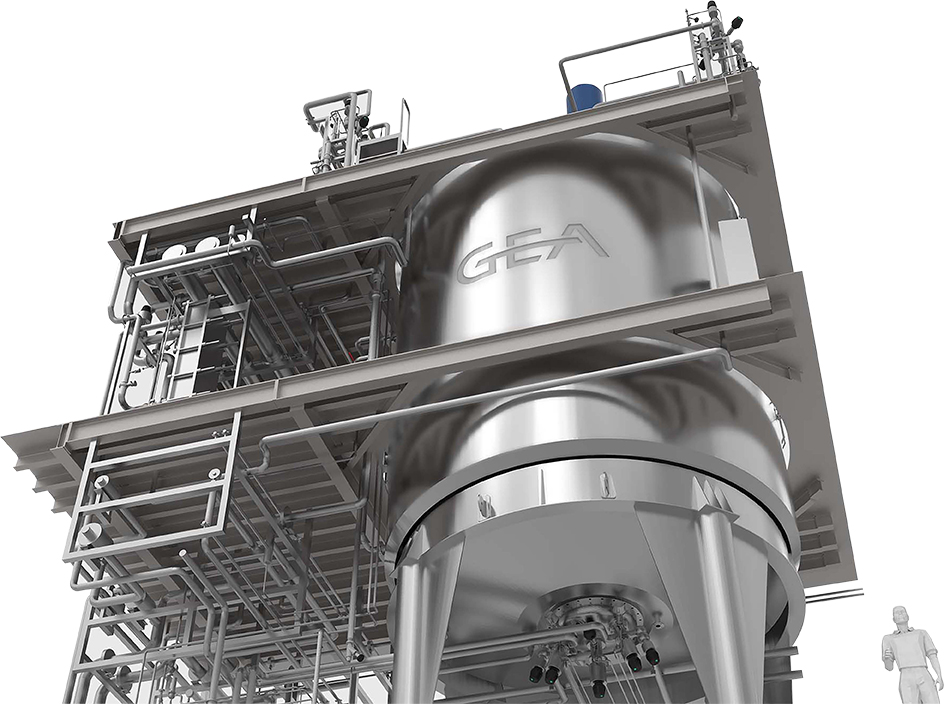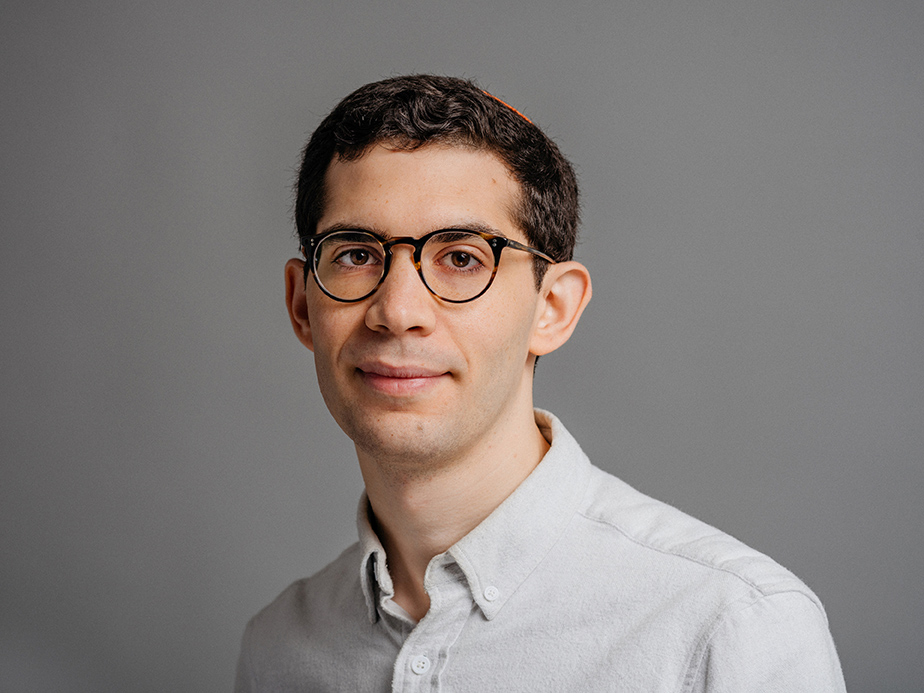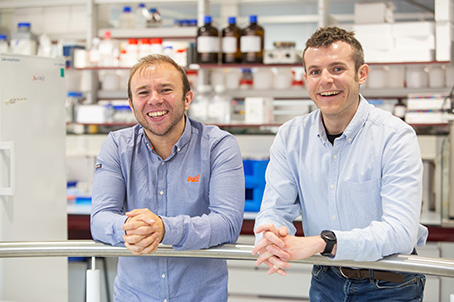

Deep Dive: Better by design?
Advances in technology are having a positive effect on the quality of alternative meats, whether cultivated or via fermentation. But, John Challen examines, will the next generation of bioreactors be fit-for-purpose?
To reimagine meat, there is a school of thought that suggests bioreactors will need to be reinvented, focusing more on economies of scale, automation, and increased computer power, especially given the rise of AI and machine learning.

Replacing just 1% of the world’s meat consumption with cultivated meat would require a 100-fold increase in the current bioreactor capacity. Given the demands of these bioreactors from other industries, a complete overhaul should be a major consideration.
Eyal Rosenthal, CEO at Ever After Foods, is fully aware of that situation. “There are currently no off-the-shelf bioreactors for producing cultivated meat at scale,” he states. “Moreover, the existing platforms are based on the stirred-tank bioreactor which – at high scales – generates unavoidable shear stress that negatively impacts animal cells and limits production yields.”
Rosenthal’s company has developed a proprietary system that overcomes the current limitations, including scalability and meat parity. “To prove our concept, in the short-term we are aiming to launch premium poultry products.”
The Haifa, Israel-based innovator is planning to partner with bioreactor manufacturers to bring its solution to the cultivated meat industry. “Our current pilot system is highly productive, yielding seven times more cultivated meat per run than those of our competitors that operate at the same scale,” Rosenthal continues. “Consequently, we can produce more product from smaller bioreactor volumes.”
From a design point of view, the Ever After Foods man would like to see bioreactors developed that provide better conditions for animal cells to grow and form tissues at large scales. “The animal cells are highly sensitive to process-related shear stress, unlike yeast and bacteria which are used in fermentation processes,” he says. “Another major difference is that in the fermentation processes, the product is produced by the yeast and bacteria cells and accumulated in the fermenter. In cultivated meat, cells in the form of mature tissue are the product itself.
“We believe that our solution holds a great potential to overcome a key issue that the cultivated meat industry is currently facing – which is the scalability challenges toward commercialization of cultivated meat,” Rosenthal says.

New players bring new approaches
The need for better bioreactors was first brought home to Yossi Quint, Founder & CEO of Ark Biotech, in a previous role at McKinsey. “I had the opportunity to be involved in one of McKinsey’s first projects in the cultivated meat space and realized that no-one was addressing the problem of bioreactors in a sensible way. Cultivated meat has the potential to create a much better world, and I wanted to do everything I could to enable its success.”
Today, Ark is focused on creating fit-for-purpose infrastructure for the cultivated meat industry. “Cultivated meat is a reality,” Quint asserts. “Bringing it to the mass market is the final frontier and the most challenging problem yet to be solved.”
To help, Ark has developed a bioreactor that is 90% cheaper than rival products and it can scale to millions of liters, if required. The company has developed a set of models to “dramatically improve” yields through optimization. “No set of incremental bioreactor changes will enable cultivated meat to reach the masses at an affordable price in any reasonable time – something needs to be addressed by an order-of-magnitude improvement,” Quint suggests. “All current production technology is inadequate as it won’t reduce cost by such significant levels, nor will it enable a two or three order-of-magnitude increase in capacity.”
Cultivated meat will need unique bioreactors because the scale of product required is so dramatically different than for pharma
Ark has therefore gone back to first principles to reimagine the bioreactor and has developed something that is capable of producing massive quantities of meat at an affordable price point.
What that means for cultivated meat, Quint adds, is bespoke bioreactors. “Cultivated meat will need unique bioreactors because the scale of product required is so dramatically different than pharma,” he says. “It will also need to be different from other food uses, mainly fermentation, as cells require much cleaner and finetuned environments. These bioreactors need to be much more advanced than a fermenter used for mycoprotein or beer.”

So, what’s the best way to overcome a bottleneck? Go large! “Size is important in terms of CapEx and OpEx,” Quint states. “Bioreactors have a lot of fixed costs, so larger ones enable lower cost per liter of capacity. Each bioreactor also requires labor and supporting equipment, so having fewer, large bioreactors reduces operating costs.”
Quint doesn’t always equate bigger with better, though, as the benefits of scale do even out at some point. “Considerations such as contamination and downstream processing also need to be accounted for, too,” he notes.
Quint says efficiency and sustainability improvements have also been factored into the new bioreactors. “At Ark, we’ve created a suite of scale-up tools that leveraged modeling and computational fluid dynamics so the bioprocess can be scaled up and optimized quickly and effectively,” he says.
“When it comes to sustainability, in the alt proteins sector especially, it is particularly important that we are not only creating a product that is sustainable but producing it in the most sustainable way possible. Therefore, moving from single use to stainless steel (or other reusable materials) is a big opportunity, and others include media recycling and improved cleaning methods that require less water.
“Single-use technologies are too expensive, not to mention unsustainable (a lot of plastic), for industrial production of cultivated meat,” Quint feels. “They have a role in R&D and parts of the upstream process – i.e. early parts of the seed train – but do not make economic sense at industrial scale.”
The case for bespoke bioreactors
At the helm of another start-up business are Jack Reid and colleague Dr Adam Glen. They founded Unicorn Biotechnologies in 2020 with the intention of reinventing how things are made and built with biology. “Biotechnology is powering the creation of transformative products – from stem cell-based therapies to cultivated meat – which have the power to tangibly move the needle on improving human health and helping to decarbonize industry,” Reid says.

The idea of a ‘perfect’ bioreactor is a nice dream to have but, in reality, Reid and Glen do not think such a product is possible. “The real challenge with scaling up a bio-manufactured product, such as cultivated meat, is finding the right tools to help someone achieve their goals – whether that be speed to market, reducing manufacturing COGS or compliance with a specific regulatory environment,” adds Glen. “Much like people, bioreactors come in all shapes and sizes, and the perfect bioreactor for one person will look very different to the perfect bioreactor for someone else.”
With that in mind, Unicorn develops all of its own equipment because, according to Reid, “almost every bioreactor on the open market is not fit for purpose for producing cultivated meat” – or any of the other transformative innovations that are built using living cells.
“Our philosophy is that it’s easier to build a new machine around complex biology than to fit biology to an existing machine,” Glen explains. “Most bioreactors have been optimized for other applications, such as vaccines. You use entirely different cells (biological systems) in vaccines than you do to make cultivated meat, or cell therapies.”
So, if not ‘perfect’, the ultimate bioreactor for cultivated meats needs to be specifically fit for purpose. “The challenge in our mind shouldn’t be how do x + n companies compete for the attention of y bioreactor producers,” Glen notes. “It’s the opposite. How can we encourage more companies to enter the bioreactor development and manufacturing space to meet this growing demand?”
“Overcoming the bottleneck will be a mix of building more efficient, automated bioreactor systems, the cultivated meat field maturing and honing in on a shared set of industry wide standards and practices, and an industry-wide effort to build out the supply chain,” says Reid. “The vision of cultivated meat is inspiring. But it only works if there is sound science and an economically viable product that can support an industry of enabling technology providers.”
Developing industrial-capacity, commercially viable production at scale will not only require a fit-for-purpose bioreactor, but innovative and integrated process systems configured to produce the best-possible yields
No substitute for experience
As a leading provider of machines, know-how and full process lines to the F&B industry, GEA is no stranger to the growing market for alternative proteins. “We’ve been innovating in this area for decades and many technologies needed to create alternative proteins are quite similar to those we use when producing traditional foods or even pharmaceuticals,” believes Arpad Csay, Head of New Food North America. “As the exact combination of machines and processes differs, we deep dive to adapt our machines based on specific customer needs in this market.”
Such is the growing importance and potential for food applications, GEA has established a New Food Application and Technology Center of Excellence. “This facility offers leading-edge bioreactor and precision fermentation and allocated upstream and downstream technologies,” explains Csay. “We also use computer modeling to test our proprietary bioreactors under a multitude of conditions in different configurations based on specific customer needs. Although vessel size is the primary limitation for commercially viable large-scale production, that should be overcome once continuous processes are adopted across the industry.”
Csay agrees with his industry colleagues that cost is one of the prohibiting factors when looking to create bespoke bioreactors for food and says you have to be clever to make a difference. “Developing industrial-capacity, commercially viable production at scale will not only require a fit-for-purpose bioreactor, but innovative and integrated process systems configured to produce best-possible yields.”

There are also financial implications when it comes to single-use technologies, especially when considering the volumes required for the food industry. “It seems to work best in biopharmaceuticals where it can help minimize the chance of contamination. However, I see opportunity for small-scale food-tech applications such as lab, benchtop and pilot.”
A fresh, collaborative approach
The Cultivated B is another company starting out its journey in food, having specifically been predominantly involved in biotechnology. “We offer an integrated solution – from cell line, to medium, to transformative bioreactor technology – for nearly every company that is either in the field of cellular agriculture or interested in it,” confirms Dr Hamid Noori, CEO. “Quite often, companies we encounter in cell ag are startups moving from lab-scale proof-of-concept production to having either pilot plants or scaled-up production. We have the technology and machinery and can also consult and advise companies how to best scale up their businesses.”
Partnerships are a key part of the model, with the goal of helping the industry as a whole. “We invited larger players in the food business to collaborate with us with a sufficient amount of biomass for them to design and test new sausages or burgers, which is always necessary prior to entry to the market,” explains Noori. “We consider ourselves being enablers in this process because we have the technology to help companies grow.”
Like others, Noori says single-use technologies are not the best fit for the cultivated meat sector, but caveats that by not completely ruling them out in the future. “Our company is entirely focused on stainless steel bioreactors,” he confirms. “There have been a lot of discussions and a number of publications on the exact pros and cons of single use versus multiple use, one of them being single use is more sustainable because cleaning a stainless-steel bioreactor means more effort, in some people’s opinion. There’s a loss of time on one hand but single use is less sustainable as you’re basically using petrochemical processes to make the plastics.
“Essentially, single use isn’t very scalable, so it’s good for lab-scale work,” he furthers. “But, in my opinion, once you enter the industrial level, you need to reduce operating costs and one way to do that is not buying new every week.”
When it comes to what the future holds for bioreactors, Noori is staying relatively tight-lipped about what he and his colleagues are working on. “Put it like this: there are different types of bioreactors that have been investigated over the past 50 years and every expert in the field knows the pros and cons of using them,” he says. “Some are associated with very high yields, which are maybe not as scalable as the others. Different bioreactors are very scalable but have side effects on the cells within them, so the efficacy potential is less. It’s most likely there will be a mixture of different elements that would come together to overcome the various hurdles at different stages. The key aspect of that is that industrial production is not a matter of perfection, but a matter of trade-off.

“Everyone is still collecting the data to help them figure out where that semi-optimum line could be,” Noori continues. “We don’t believe there will be a best scenario for any of these things – there will be several approaches that all lead to the same positive result. But all with different trade-off scenarios that you need to either accept or reject.”
Finally, there’s an industry-wide plea from Noori as the importance of cultivated meat production continues to increase. “I invite all my colleagues in cell ag to become a little bit more pragmatic as I genuinely think it increases trust in the industry. I am a scientist – always have been – and that didn’t change when I became an entrepreneur. From my perspective, sometimes putting one foot in front of the other – claiming less and waiting until one has substance – increases trust in that industry.
“I have empathy and I fully understand that younger companies in particular need to make a big fuss and advertise their potential capabilities,” he adds. “But it is also not
a bad idea to remain on the ground of reality so that if we really want to see these fields succeed, one foot in front of the other would be the safer path as opposed to just jumping around and attracting attention.”
If you have any questions or would like to get in touch with us, please email info@futureofproteinproduction.com









